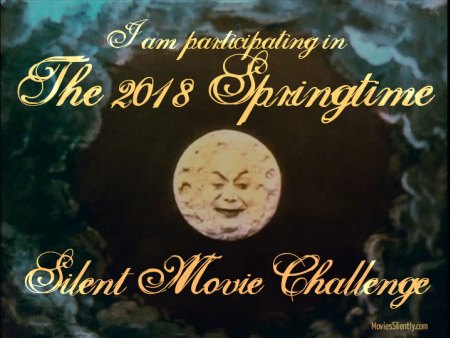This post is part of the Springtime Silent Movie Challenge: In the Beginning..., hosted by Fritzi at Movies Silently. "Here’s the challenge. Before June 21, 2018, you will:
"Watch 5 movies made between 1906 and 1914
"Watch 5 movies made in 1905 or before
"Share your experience on your blog, on social media or here in the comments (I will set up a special post for the purpose to publish on June 21)"
For my five 1905 or before movies, I thought I would look at some pioneering efforts.
My second film is called the "Dickson Greeting" and it may have been the first American movie shown to the public.
I picked this film because when I was in grammar school, I don't remember what grade, I bought a Scholastic book about Thomas Edison. I have always been interested in Edison. One chapter, illustrated with a line drawing, described a meeting of a women's group. As a special attraction, they got to see a movie. The book described someone, Edison I think, but I could be wrong, walking into the frame, talking to the audience with perfect synchronization, removing his hat, and bowing. I knew enough about movies by that time to know that no one had made a synchronized sound film and that no one had demonstrated a projector by that time. Other books I had read in the Anza branch library, books about film history, did not mention this demonstration. I figured someone was exaggerating, which made me distrust other things in the book.
 |
| Century, June, 1894 |
We only have three seconds of the film, which may have been longer. One thing I always notice about early Edison films is the intense light. This was necessary because film stock was not very sensitive. Notice that the subject of the film has his eyes closed.
 |
| www.listal.com |
Dickson was a Scot but was born in France. He came to America in 1879 and by 1883 he was working for Thomas Edison. When Edison came up with the idea for a device that could record and show moving pictures, Dickson got the assignment to make it happen.
 |
| Century, June, 1894 |
 |
| New York Sun, 28-May-1891 |
"A little while ago there was a great convention of the women's clubs of America. Mrs. Edison is interested in women's clubs and their work and she decided to entertain the Presidents of the various clubs at the Convention. Edison entered into the plan, and when 147 club women visited his workshop he showed them the working model of his new Kinetograph, for that is the name he has given to the most wonderful of all his wonderful inventions.
 |
| New York Sun, 28-May-1891 |
The device which shot the film was called a Kinetograph. The device used for view was called a Kinetoscope.
Next Saturday: The first comedy film.


No comments:
Post a Comment
Comment moderation is turned on. Your message will appear after it has been reviewed.